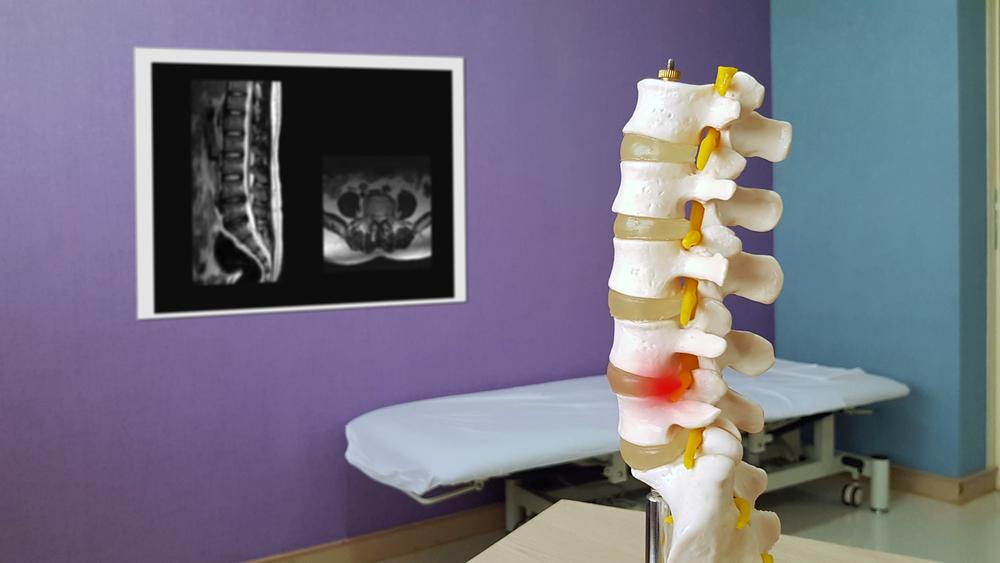The start of 2023 not only marked the new year but also unveiled a revelation. In January 2023, popular singer Adele, known for songs like ‘Hello’ and ‘Rolling in the Deep’, revealed that she is suffering from a bad case of sciatica, which has impacted on how she walks.
The acclaimed singer’s shocking health revelation went viral across social media platforms, and this in turn has shed light on sciatica as a whole. The term “sciatica” saw an increased number of searches during this period, and a discourse space was opened in the community to further understand this pain that travels along the sciatic nerves.
To add on to the discourse with credibly sourced information, we’ve gotten in touch with Stephanie Choo, a certified chiropractor from the renown International Medical University (IMU), where she graduated with Honours in Bachelor of Science, specialising in chiropractic care. Stephanie consults on areas such as spine related conditions, pre and postnatal back pain, chronic musculoskeletal pain, and many more. Stephanie currently runs a chiropractic centre, Spineplus in Bandar Sunway.
SCIATICA PAIN CAN VARY WIDELY. IT MAY FEEL LIKE A MILD TINGLING, DULL ACHE, OR BURNING SENSATION.
1Twenty80:What is sciatica?
Stephanie Choo: Sciatica is nerve pain from an injury or irritation to the sciatic nerve, which originates in your buttock or gluteal area. The sciatic nerve is the longest and thickest (almost finger-width) nerve in the body.
1Twenty80:What are the symptoms of sciatica?
Stephanie: Sciatica pain can vary widely. It may feel like a mild tingling, dull ache, or burning sensation. In some cases, the pain is severe enough to make a person unable to move.
The pain most often occurs on one side. Some people have sharp pain in one part of the leg or hip and numbness in other parts. The pain in the leg is often more painful than the pain in the back. The pain or numbness may also be felt on the back of the calf or on the sole of the foot. The affected leg may feel weak.
The pain may be constant or intermittent. Also, the pain is usually more severe in your leg compared to your lower back. The pain may feel worse if you sit or stand for long periods of time, when you stand up, or when you twist your upper body. A forced and sudden body movement, like a cough or sneeze, can also make the pain worse.
1Twenty80:What are the causes of sciatica?
Stephanie:
- HERNIATED DISC
One of the most common causes of sciatica is a herniated disc in the lower part of the spine. It’s also called a “slipped disc,” though there’s no slipping going on.

- SPINAL STENOSIS
Spinal stenosis is the narrowing of the spinal canal from degenerative disc, thickened ligaments or osteoarthritis of the facet joints.

- PREGNANCY
During the second and third trimesters of pregnancy, the shifting of weight and loosening of ligaments can put indirect pressure on the sciatic nerve.

- TUMOUR
More rarely, a tumour can put pressure on the nerve. Or a disease such as diabetes can damage the nerve.

Are there any risk factors associated with sciatica?
Stephanie:
- AGE
Age-related changes in the spine, such as herniated disks and bone spurs, are the most common causes of sciatica. - OBESITY
Being overweight increases stress on the spine. - OCCUPATION
A job that requires twisting the back, carrying heavy loads, or driving a motor vehicle for long periods might play a role in sciatica. - PROLONGED SITTING
People who sit a lot or don’t move much are more likely to develop sciatica than active people are. - DIABETES
This condition, which affects the way the body uses blood sugar, increases the risk of nerve damage.

1Twenty80:Does chiropractic care help with sciatica? If so, how?
Stephanie: Yes, of course! Chiropractors can use spinal manipulation to reposition a herniated disc and relieve pressure on the sciatic nerve. Depending on the cause of the sciatica, we also provide decompression for herniated discs, modalities to help with inflammation, trigger point therapy if a particular muscle is tight and compressing the nerve, and many more!
We also provide home exercises for patients, be it stretching or strengthening exercises, to help speed up the recovery.
1Twenty80:Can sciatica lead to any complications?
Stephanie: Chronic (ongoing, lasting) pain can be a complication of sciatica. If the pinched nerve is seriously injured, chronic muscle weakness, such as a “drop foot,” might occur, when numbness in the foot makes normal walking impossible. Sciatica can potentially cause permanent nerve damage, resulting in a loss of feeling in the affected legs.
1Twenty80:Is sciatica preventable?
Stephanie: Definitely! Sedentary lifestyle puts you at risk for many conditions and not just sciatica, adequate stretching and more will definitely help to prevent it.












